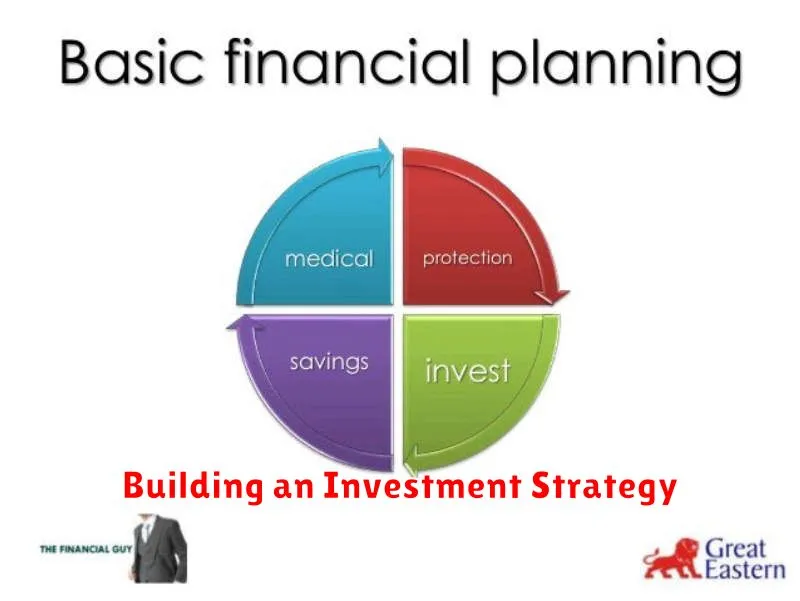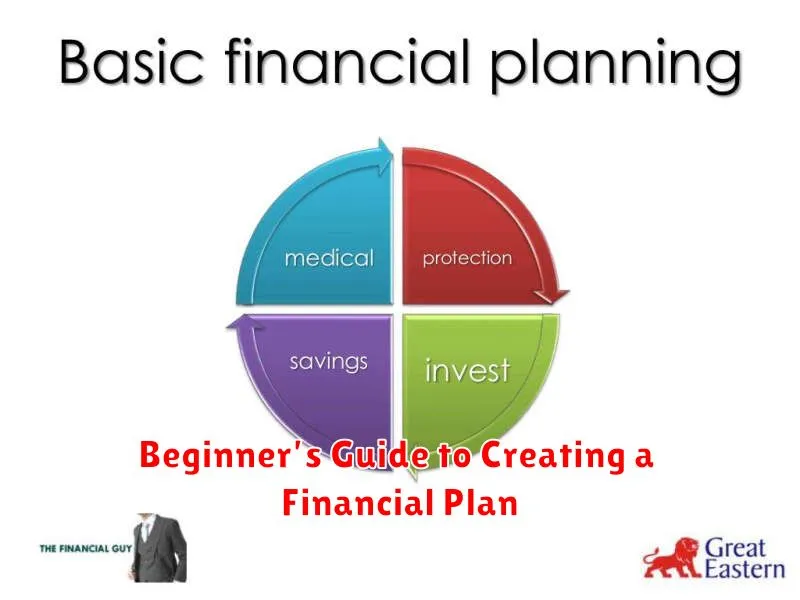Creating a financial plan is the cornerstone of achieving your financial goals, whether it’s buying a home, retiring comfortably, or simply gaining control of your personal finances. This beginner’s guide provides a comprehensive roadmap to developing a personalized financial plan, regardless of your current financial situation. We’ll cover essential topics including budgeting, saving, investing, debt management, and financial goal setting, empowering you to take charge of your financial future.
Navigating the complexities of personal finance can be daunting, especially for beginners. This guide simplifies the process, offering practical advice and actionable steps to create a financial plan tailored to your specific needs. From understanding your current financial health to setting realistic financial goals and choosing the right investment strategies, this beginner’s guide will equip you with the knowledge and tools to build a secure and prosperous financial future. Take the first step towards financial freedom by learning how to create a financial plan that works for you.
What Is a Financial Plan?
A financial plan is a comprehensive document outlining an individual’s or entity’s current financial state and long-term financial goals. It serves as a roadmap for achieving these objectives by allocating resources, managing finances, and mitigating risks. A well-structured plan considers various aspects, including income, expenses, investments, insurance, and retirement planning.
Key components of a financial plan often include a net worth statement, a budget, a debt management plan, an investment strategy, and an estate plan. The plan should be dynamic, adapting to changes in circumstances and market conditions. Regular review and adjustments are crucial to ensure its continued effectiveness.
The benefits of having a financial plan are numerous. It allows for informed financial decision-making, promotes financial stability, and provides a framework for achieving long-term financial security. By setting clear goals and outlining actionable steps, a financial plan empowers individuals and organizations to take control of their financial futures.
Assessing Your Current Financial Situation
A clear understanding of your current financial standing is the crucial first step towards effective financial planning. This involves meticulously tracking your income and expenses. Calculating your net worth, the difference between your assets (what you own) and liabilities (what you owe), provides a snapshot of your overall financial health. This process allows you to identify areas of strength, such as consistent savings, and pinpoint areas for improvement, like high-interest debt. Regularly reviewing your budget and net worth statement empowers you to make informed financial decisions.
Beyond simply tracking numbers, analyzing your spending habits is essential. Categorizing your expenses into needs versus wants can reveal areas where you can potentially reduce spending and redirect funds towards financial goals. Understanding your cash flow, the movement of money in and out of your accounts, allows you to anticipate potential shortfalls and adjust your budget accordingly. This holistic approach to assessing your finances provides valuable insight into your spending behavior and its impact on your overall financial well-being.
Finally, consider your financial goals. Whether short-term, like building an emergency fund, or long-term, such as retirement planning, your current financial situation directly impacts your ability to achieve these objectives. A thorough assessment allows you to tailor your financial strategies and make informed decisions to align your resources with your aspirations. By consistently monitoring and adjusting your financial plan, you increase your likelihood of reaching your goals and securing your future financial stability.
Setting Short and Long-Term Goals

Setting both short-term and long-term goals is crucial for personal and professional development. Short-term goals are achievable in the near future, typically within a year. These goals act as stepping stones towards larger objectives. Examples include completing a project, learning a new skill, or improving a specific habit. They provide a sense of accomplishment and motivation, propelling you forward on your path to success. Focusing on these smaller, more manageable goals creates momentum and builds confidence.
Long-term goals, on the other hand, represent your ultimate aspirations and may take several years or even a lifetime to achieve. These goals define your overall direction and purpose. Examples include earning a degree, starting a business, or achieving a specific career milestone. Long-term goals provide a sense of direction and help you make important life decisions aligned with your overall vision. It’s important to regularly review and adjust long-term goals as circumstances and priorities evolve.
Effectively integrating short-term and long-term goals requires alignment and planning. Each short-term goal should contribute to the achievement of a larger, long-term objective. This creates a clear pathway and ensures that your efforts are focused and productive. Regularly assessing your progress and making adjustments as needed is essential for staying on track and maintaining motivation. By breaking down large, daunting goals into smaller, more manageable steps, you create a roadmap for success and increase your likelihood of achieving your desired outcomes.
Budgeting and Saving Strategies
Budgeting is the cornerstone of financial stability. It involves tracking income and expenses to understand where your money goes. Creating a budget helps you prioritize spending, identify areas where you can reduce costs, and allocate funds towards your financial goals. Various methods, such as the 50/30/20 rule (50% needs, 30% wants, 20% savings and debt repayment), can be employed to structure your budget effectively. Regularly reviewing and adjusting your budget is crucial to ensure it remains aligned with your evolving financial situation.
Saving is the act of setting aside a portion of your income for future use. Establishing clear financial goals, whether short-term (e.g., a down payment on a car) or long-term (e.g., retirement), provides motivation for saving. Automating your savings, such as through direct deposit or recurring transfers, can make saving consistently easier. Exploring different savings vehicles, including high-yield savings accounts, certificates of deposit (CDs), and money market accounts, can help you maximize your returns.
Effective budgeting and saving strategies work in tandem. By controlling spending through a well-defined budget, you free up more money to allocate towards savings. These combined practices empower you to achieve financial security, prepare for unexpected expenses, and pursue your long-term financial aspirations.
Managing Risk with Insurance
Insurance is a powerful tool for managing risk. It involves transferring the potential financial burden of unexpected events, such as accidents, illnesses, or property damage, to an insurance company. In exchange for regular premium payments, the insurer agrees to cover specified losses according to the terms of the policy. Understanding the types of risks you face, both personal and business-related, is crucial to selecting appropriate insurance coverage. This includes assessing the potential financial impact of those risks and choosing coverage limits that adequately protect your assets.
There are various types of insurance designed to address specific risks. Common types include health insurance, which covers medical expenses; auto insurance, which protects against financial losses from car accidents; homeowners or renters insurance, which covers property damage and liability; and life insurance, which provides financial support to beneficiaries upon the insured’s death. Choosing the right insurance involves carefully evaluating your needs and comparing policies from different providers to ensure you’re getting the best coverage at a competitive price. Comparing premiums, deductibles, and coverage limits is essential for making informed decisions.
Effective risk management involves not only purchasing insurance but also taking proactive steps to minimize potential losses. This may include implementing safety measures at home or in the workplace, practicing healthy habits to reduce health risks, and diversifying investments to mitigate financial risks. By combining insurance with proactive risk reduction strategies, you can create a comprehensive plan to protect your financial well-being and achieve peace of mind.
Building an Investment Strategy

Building a successful investment strategy requires careful consideration of several key factors. First, define your financial goals. Are you investing for retirement, a down payment on a house, or something else? Understanding your objectives will help determine your time horizon and risk tolerance. Next, assess your current financial situation. This includes calculating your net worth, understanding your income and expenses, and identifying any existing debts. This information will guide your asset allocation decisions and the amount you can comfortably invest.
Once you have a clear picture of your goals and finances, you can begin to research different investment options. Consider a diversified portfolio that includes a mix of stocks, bonds, and other asset classes. The specific mix will depend on your risk tolerance and time horizon. For example, younger investors with a longer time horizon may be able to tolerate more risk and allocate a larger portion of their portfolio to stocks. Conversely, investors nearing retirement may prefer a more conservative approach with a higher allocation to bonds. Regularly rebalance your portfolio to maintain your desired asset allocation.
Finally, remember that investing is a long-term process. Market fluctuations are inevitable, so avoid making emotional decisions based on short-term market movements. Stay disciplined, stick to your strategy, and review your portfolio periodically to ensure it continues to align with your goals. Consider consulting with a financial advisor for personalized guidance.
Monitoring and Adjusting Your Plan
Monitoring your plan’s progress is crucial for success. Regularly review your key performance indicators (KPIs) to understand what’s working and what isn’t. This allows you to identify potential roadblocks early on and make necessary adjustments. Track your progress against your timeline and budget to ensure you’re staying on track. Analyzing your data and comparing your actual results to your projected results is essential for informed decision-making.
Adjusting your plan is a natural part of the process. Don’t be afraid to make changes based on your monitoring efforts. If a strategy isn’t delivering the expected results, be prepared to pivot. This might involve revising your timelines, reallocating resources, or even redefining your objectives. Flexibility is key to adapting to unforeseen circumstances and achieving your overall goals.
Regular review and adjustment cycles are essential for continuous improvement. Schedule periodic reviews to assess progress and make necessary adjustments. This iterative process helps to ensure that your plan remains relevant, effective, and aligned with your overall strategic objectives. Remember, a dynamic plan is a successful plan.

